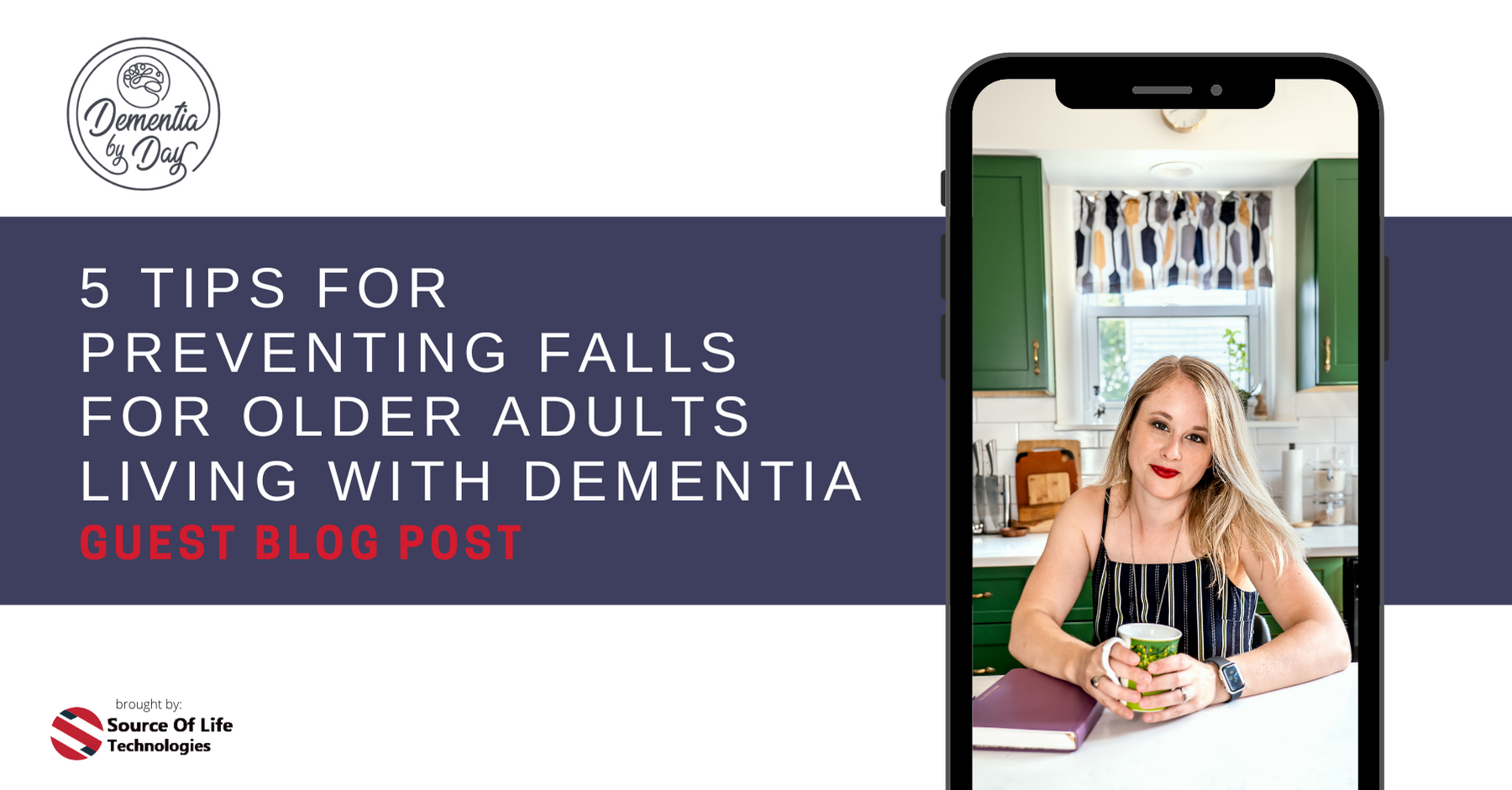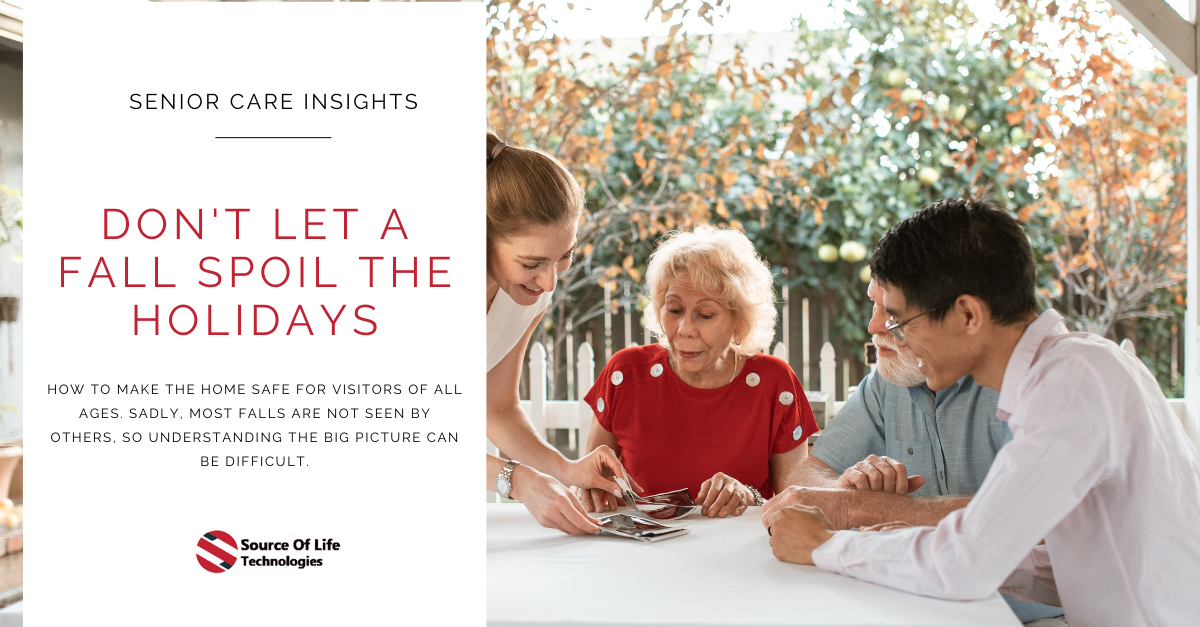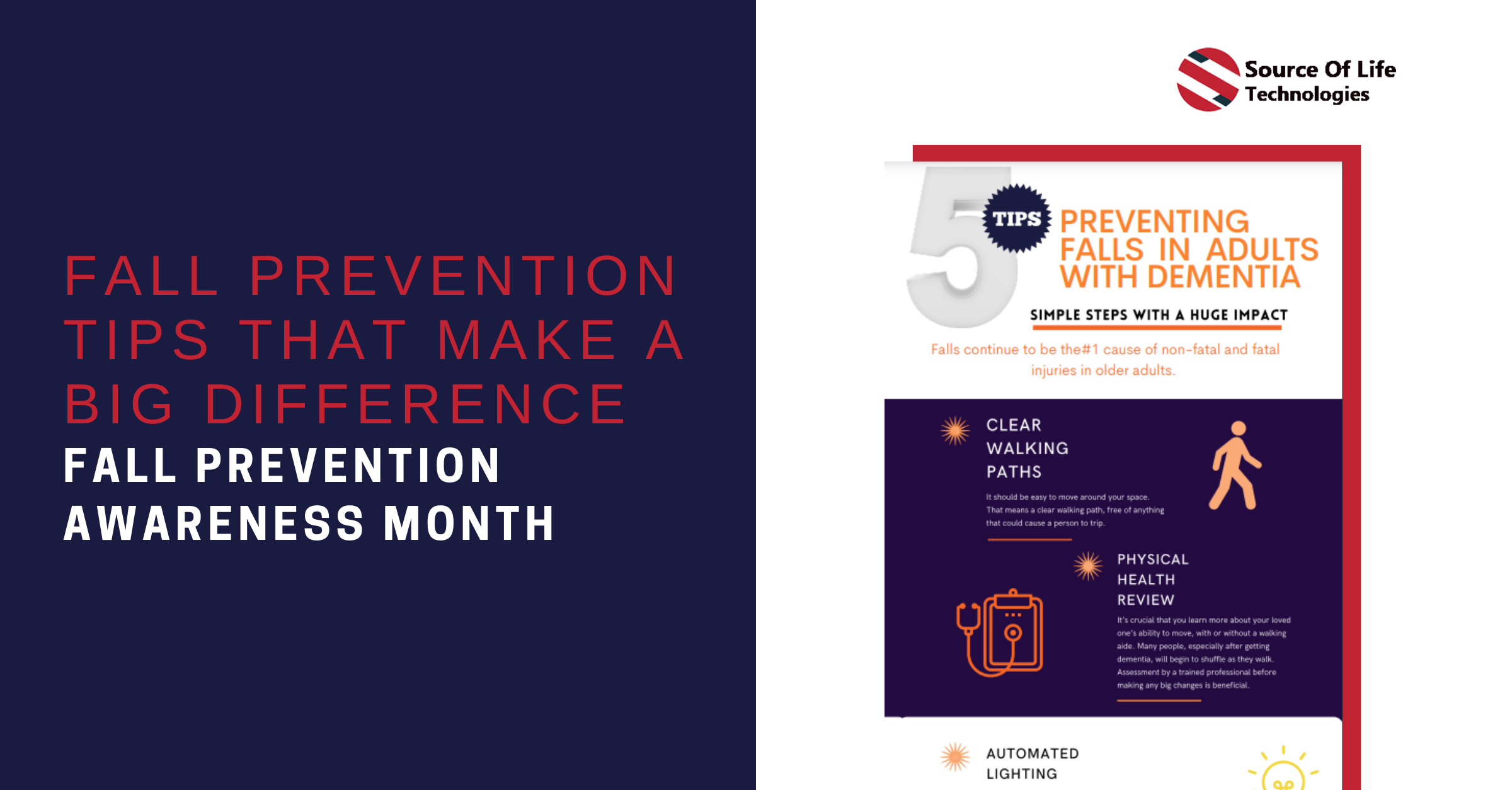5 Tips on Preventing Falls for Older Adults Living with Dementia

By Rachael Wonderlin, Dementia By Day, Consultant to Source of Life Technologies
Falls amongst older adults are far too common, costly, and preventable. In fact, they are the #1 cause of non-fatal and fatal injuries in older adults.
Falls were a daily occurrence in every assisted living community in which I worked. It got to the point where I began to know the local EMTs who came to our building nearly every day. When a fall happened, we’d run to the resident and assess. “Did she hit her head?” we would always ask one another. If she didn’t hit her head, and seemed to feel okay, we would avoid calling the ambulance.
Hospitalizations are really stressful and difficult for older adults, particularly for people living with dementia. “Sending someone out”—common parlance for “going to the hospital”—was normal, but it wasn’t desirable. When one of our residents went to the hospital, we risked that they wouldn’t come back the same as when they went—or that they wouldn’t come back at all.
Here are my best tips for preventing falls in older adults with dementia:
- Adequate lighting
Let’s face it; our eyesight changes and lessens as we age. Proper, well-lit spaces help to mitigate some of those eyesight challenges. If you are caring for someone at home, I highly recommend having lights on motion-sensors and keeping a couple lamps on overnight in case the individual wakes up and gets out of bed.
- Clear walking paths
It should be easy to get to the bathroom and back, and that means a clear walking path, free of anything that could cause a person to trip. End tables, standing lamps and even rugs can be a huge tripping hazard.
- Reviewing gait with a trained professional
It’s crucial that you learn more about your loved one’s ability to move, with or without a walking aide. Many people, especially after getting dementia, will begin to shuffle as they walk: instead of picking up their feet, they push them along the floor. It’s possible that the individual needs a walker or even a wheelchair, but they need to be assessed by a professional before any big changes can be made.
- No stairs
Stairs are incredibly dangerous for someone who has trouble walking. It’s so important that an older adult with a gait impairment be given the least amount of stairs to climb as possible. If stairs are completely unavoidable, they should be low in number and there must be a hand railing.
- Reviewing cognitive health with a trained professional
Dementia is a major cause of falls for older adults. Dementia is a group of symptoms caused by more than 100 different diseases. When someone is living with dementia, their ability to make safe choices is drastically impaired. This means that, even though you’ve written a note at the top of the stairs reminding your loved one not to use them, they will probably disregard your warning.
These are great tips, but when it comes down to it, fall prevention needs to be proactive—not reactive.
Because falls are such common occurrences in senior living, we did our best to mitigate fall risks: good lighting, use of walking aides for residents who needed them, hand railings, no stairs, nothing in pathways or for residents to trip on. Still, falls happened. Constantly.
Just imagine if you could monitor, track, and address a person’s needs before a fall happens. This type of fall prevention initiative is available with Source of Life Technologies new product, Mat of Life: your modern fall prevention solution.
What can Mat of Life do that basic fall prevention tips cannot?
Decreases confusion and way-finding challenges at night.
Mat of Life integrates with a bulb holder that can easily be placed at the base of your lamp, ceiling light or other area to ensure sufficient light is always available from the first step and triggers the desired pathway.
Increases feelings of independence and autonomy for the user.
No cameras here! Mat of Life doesn’t bring cameras into your home or your loved one’s room at all. Unobtrusive notification options using the Mat of Life App keep the entire caregiving team aware and can be tailored to contact caregivers or family through audible sound, text messaging, and or phone calls when deviations from baseline getting up and down habits are present.
Eliminates unease and brings peace of mind to the user, care providers and family members.
Mat of Life is a wireless “smart” mat for bedside, doorway, or any other area requiring potential fall intervention that rolls away and can travel with you.
Establishes a trusted online support network.
The Mat of Life has an online engagement platform and offers quick access to loved ones and care providers including physical therapists and physicians offering preventative and reactive care.
Falls in the senior community are far too common, costly, and preventable. Senior care fall strategies shouldn’t be reactive - they should be proactive. Just imagine if you could monitor, track, and address patient needs BEFORE a fall happens. This type of fall prevention initiative is available with Source of Life Technologies - Mat of Life - your modern fall prevention solution.
You can learn more about Mat of Life here.

